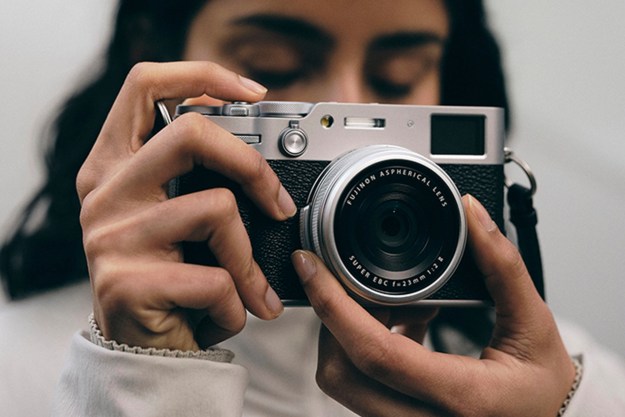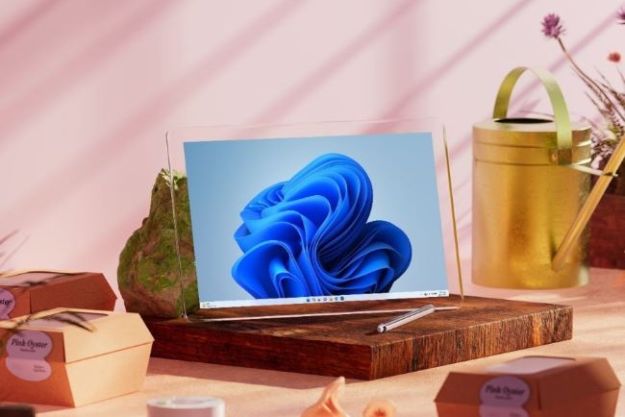At the Photokina show in Cologne, Germany, Panasonic announced a slew of new products that got enthusiasts all around the world excited. One of the new products is the Lumix LX100, a fixed-lens compact camera that continues both the LX-series as well as the old LC1 fixed-lens camera. In reality though, it’s a completely new product for Panasonic and has some surprising features in store. We had an opportunity to try the product before the product was officially announced, but we took an even closer look at the show in Germany. Here’s our first impressions.
The LX100 is the first-ever fixed-lens compact camera to use a large Four Thirds sensor. For those who are not that much into technical details, the Four Thirds sensor, which is also used in the Micro Four Thirds system, is slightly smaller than the APS-C format used in other mirrorless and DSLR systems, but still much larger than most compact camera sensors. This means, of course, that the new LX100 provides the same kind of image quality as Panasonic’s interchangeable-lens models, such as the GM1, GX7 or GH4, and putting it in competition with Sony’s Cyber-shot RX cameras and Nikon’s Coolpix A. In fact, the compact camera even supports 4K video recording, which makes it a serious contender in the compact camera market. (You can find the full technical specifications of the LX100 in our original product announcement here.)
Unfortunately, during our hands-on time at Photokina, we weren’t allowed to put an SD card into one of the cameras, since they were all pre-production models. What we can comment on, though, is how the camera feels in the hand. On the outside, the most notable feature is the plethora of dials for manual operation, which will find a liking with enthusiasts. These also put the camera in direct competition with Fujifilm’s X-series models, which have always been focusing on manual operation.

On the top right-hand side, the LX100 has a shutter speed dial that lets you easily switch from manual exposure to auto-exposure – similar to the way the Fujifilm X100(S/T) is operated. When the dial is in the “A” position, the camera will determine the best shutter speed for an accurate exposure. Putting it to any of the time values, which range from “T” for long exposures all the way to “4,000” for the fastest 1/4,000-0f-a-second shutter speed, switches over to either “S” (shutter priority) or “M” (manual) mode depending on the setting of the aperture dial (which we’ll deal with in a bit.) Besides an on/off switch, zoom lever, shutter button, and “Filter” button, there’s also an exposure compensation dial that lets you tweak the camera’s chosen exposure values in any of the automated shooting modes.
Related: Panasonic updates Micro Four Thirds small wonder with Lumix GM5

Next up is the lens, which features two dials and two levers. The frontmost dial on the lens is the aperture dial, and just like the shutter speed dial it features an “A” position as well as individual positions for manually setting the aperture. Using the shutter speed and aperture dials, the camera can be set to fully automatic exposure (or P mode), aperture priority, shutter priority, or fully manual exposure. The second ring around the lens can be used for different functions, just like lens rings on other camera models. One of the functions that the ring can be used for is zooming, in case you prefer that over using the zoom lever around the shutter button.
On the rear end of the lens there’s the image aspect ratio switch that we have seen from previous LX-series models. It comes with four positions that let you switch between square 1:1 aspect, the classic 35mm-format aspect of 3:2, the native 4:3 aspect of the Micro Four Thirds sensor, and finally the modern 16:9 aspect that is used mostly for video. On the left-hand side of the lens is another lever that lets you switch between autofocus, macro focus, and manual focus. When the lever is set to MF, the ring around the lens serves for focusing.

We already mentioned the LX100 has a concept similar to that of Fujifilm’s X100, and this continues on the rear of the camera where the LX100 has an integrated electronic viewfinder. The EVF is much larger than the one that Panasonic has put in the new GM1 Micro Four Thirds camera, and sports a high resolution of approx. 2.4 million pixels. In fact, the EVF appears to be the same as in the GX7 midrange Micro Four Thirds camera, with the difference that in the LX100, it cannot be tilted upward. Still, it is a very useful addition and makes the camera much more versatile.
Further down on the back of the LX100 there’s a large 3-inch display that’s rated almost a million dots, which is just enough resolution to review your images but may not be sufficient for critical manual focusing at wide apertures. Also, the display cannot be tilted, which is a bit of a disappointment as you get a tilting screen in almost any high-end camera these days. So no pictures from high or low angles, unless you are more than six-feet tall or enjoy lying flat on the ground when taking a photo. A tilting EVF or rear display is something that Panasonic might want to consider adding in the successor to the LX100, as it would be a real benefit for users, especially videographers.
Related: Camera phone? Phone camera? Panasonic’s CM1 blurs the line for sharper snaps
On the top right-hand side of the LX100’s backside there’s a nice thumb rest similar to those you can find in other Panasonic models, and together with the large, pronounced front grip it gives the camera a very nice and secure feel when held in-hand. Thanks to its ergonomic design, the LX100 doesn’t feel unbalanced even with the lens extended to its full zoom position. The remainder of the camera’s back features a reasonable amount of buttons that let you access not only the settings menu but also various kinds of direct functions, plus three function buttons that can be assigned custom settings.

When taking a look at the LX100’s menus, it becomes even clearer that the camera is aimed at the enthusiast photographer that wants a high-quality, versatile device without having to lug around a larger and heavier mirrorless model. Flipping through the menus we noticed one page that caught our particular attention – the shutter settings page. Here, you can not only switch between fully mechanic and electronic shutter in order to enable shutter speeds as high as 1/16,000 sec., but you can also choose such neat functions as time-lapse shooting or stop-motion animation.
As we already mentioned, the cameras on display at Photokina were all pre-production models, so we can’t comment on image quality and performance at this point. What we noticed, however, was how quick the autofocus seemed to be already in these non-final models. No matter the zoom setting or aperture selected, the LX100’s AF was lightning fast and extremely accurate, which is just what you would expect from a high-end compact camera. Panasonic promises that the AF will work in low light down to -3 EV, which we couldn’t test at the company’s brightly-lit Photokina booth.
Overall, our first impressions of the Panasonic LX100 are very positive. It has a well though-out concept that should make most enthusiast photographers happy. And even though it is relatively large for a compact camera – substantially larger even than Panasonic’s smallest Micro Four Thirds cameras with interchangeable lenses – it packs a lot of punch into a package that can still be considered to be compact, at least in comparison to higher-end mirrorless models or DSLRs. The killer feature of the camera surely is the 4K video mode, which is something you don’t find in many compact models yet. That, along with other features and general performance, will have to wait until we can get our hands on one for a full review.


